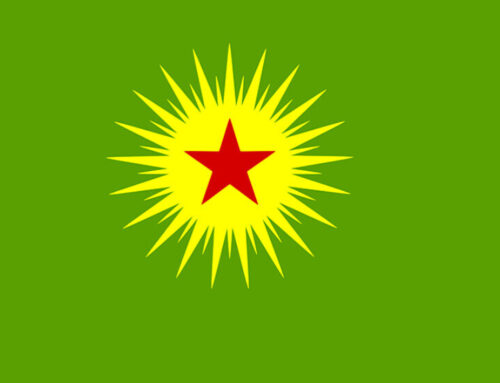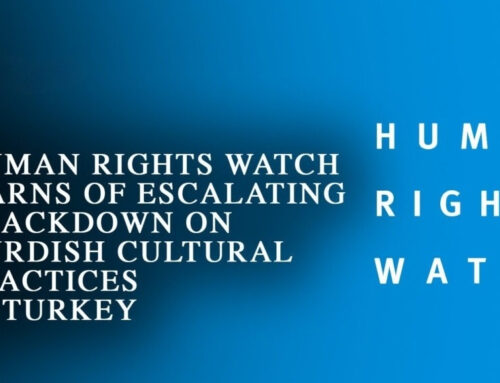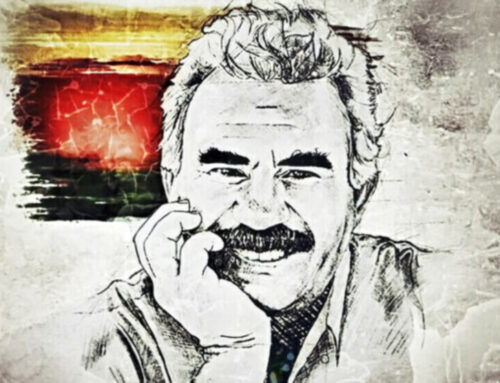Nevzat Onaran on the Ottoman Empire and Turkey: The discourse of rebellion was ‘an excuse’ for ethnic-cleansing
Nevzat Onaran on the Ottoman Empire and Turkey: The discourse of rebellion was ‘an excuse’ for ethnic-cleansing
- Date: September 15, 2021
- Categories:Interviews,Rights

- Date: September 15, 2021
- Categories:Interviews,Rights
Nevzat Onaran on the Ottoman Empire and Turkey: The discourse of rebellion was ‘an excuse’ for ethnic-cleansing
Onaran concludes in his most recent book that Ottomans waged an "internal war" against non-Turk, non-Muslim and non-Sunni minorities. But this is not only about history anymore: he argues that Turkey continues with this war, inherited from the Ottomans.
Nevzat Onaran, an independent researcher and writer, has documented the massacres in Koçgiri, Pontus, Sasun, Thrace and Dersim, which took place between 1920 and 1940 in his most recent book entitled ‘The Internal War of the State.’
Onaran identifies the continuities between the Ottoman Empire and the Republic of Turkey with regard to their perspectives of Greeks, Armenians, Kurds and Jews. His book draws upon a series of documents taken from the historical archives, which were not easy to access.
In an interview with ANF, Onaran talked about the findings of his book and the correlation between the policies of contemporary Turkey and the policies of the Ottomans with regard to ‘non-Turk’ and ‘non-Muslim’ identities.
The “Turkish national state” was founded initially during 1910 and this foundation was already built by the 1920s, Onaran concludes. “Both were bloody processes. When we analyse the period between 1910 and 1940, we see that the Turkish national state had two founding characteristics; nationally ‘Turk,’ religiously ‘Sunni-Islam.'”
Starting from the 1910s, he notes, the demographics were altered by expelling all those who were “not Turk and Sunni Muslim.”
“This process made the Anatolian region a territory of slaughter. All actions committed with the planned operations of the state against Armenians in 1915; Kurdish-Aleviates-Kızılbashs from Koçgiri in 1921; Greeks in 1921-22 in Pontus (in the Black Sea region); Kurds, Zazakis, Alevite-Kızılbashs in 1937-38 in Dersim, annihilating them and seizing properties, were actions taken within the scope of the second article of the Genocide Convention,” he said.
While the Christian Armenians and Greeks were “cleared” from Anatolia and then from Thrace, the Jews with a low population and visibility were also massively targeted in 1934, Onaran stated.
Especially analysing the demographic changes in Thrace, Onaran found that the Jews were viewed as a people who had to be expelled from Thrace.
“Thrace had been previously ‘cleared’ of Bulgarians, Greeks and Armenians. With the Jews being expelled, the religious-ethnic cleansing that targeted non-Muslims in Thrace was completed. The next target was Istanbul. To do the same in Istanbul, they pushed the button on the 6-7 September slaughter and continued this in 1964 by expelling the Greeks,” he said.
Onaran also noted that, no matter how much Turkish authorities tried to justify these actions in their formal history using the claim that “they were rebellions, with this research and documentation” that he put together, he states “that the discourse of ‘rebellion’ was an excuse that was used for the operations.”
The conclusion Onaran reached was that these operations targeting the non-Turks, non-Muslims and non-Sunnis was actually a war, in its nature and form. But this was not a war with two fronts: this was a war with one front where the state mobilised its military against the targeted communities. This was an internal war.
There is a continuity between the actions of the Ottomans and the Republic of Turkey, he concluded, which is based on two factors: “The first is the ideological-political programme of the Turkish national state which was formulated in the final years of the Ottoman Empire. The second is the political and the bureaucratic cadre of the state.”
He added: “In a parliamentary meeting in November of 1922, it was decided: ‘Turkey is a continuation and heir of the Ottomans.’ The Ittihat defenders of 1910 are the Kemalists of the 1920s.”
Mass killings, forced displacements and mass expropriation went hand-in-hand for the internal war of the Ottomans to be completed, Onaran notes. “Anatolian Greeks in 1920-1922, Thrace Jews in 1934, Christians and Jews in Istanbul in 1960 were subjected to mass expropriation. With the five mass expropriations between the 1910s to the 1960s, we understand that the transfer of property to the ‘Turks’ was continous and structural,” Onaran noted, adding: “According to an analysis of this structural policy, the economy-politics of Turkish nationalism is the annihilation of non-Turks and non-Sunni-Muslims.”








Leave A Comment